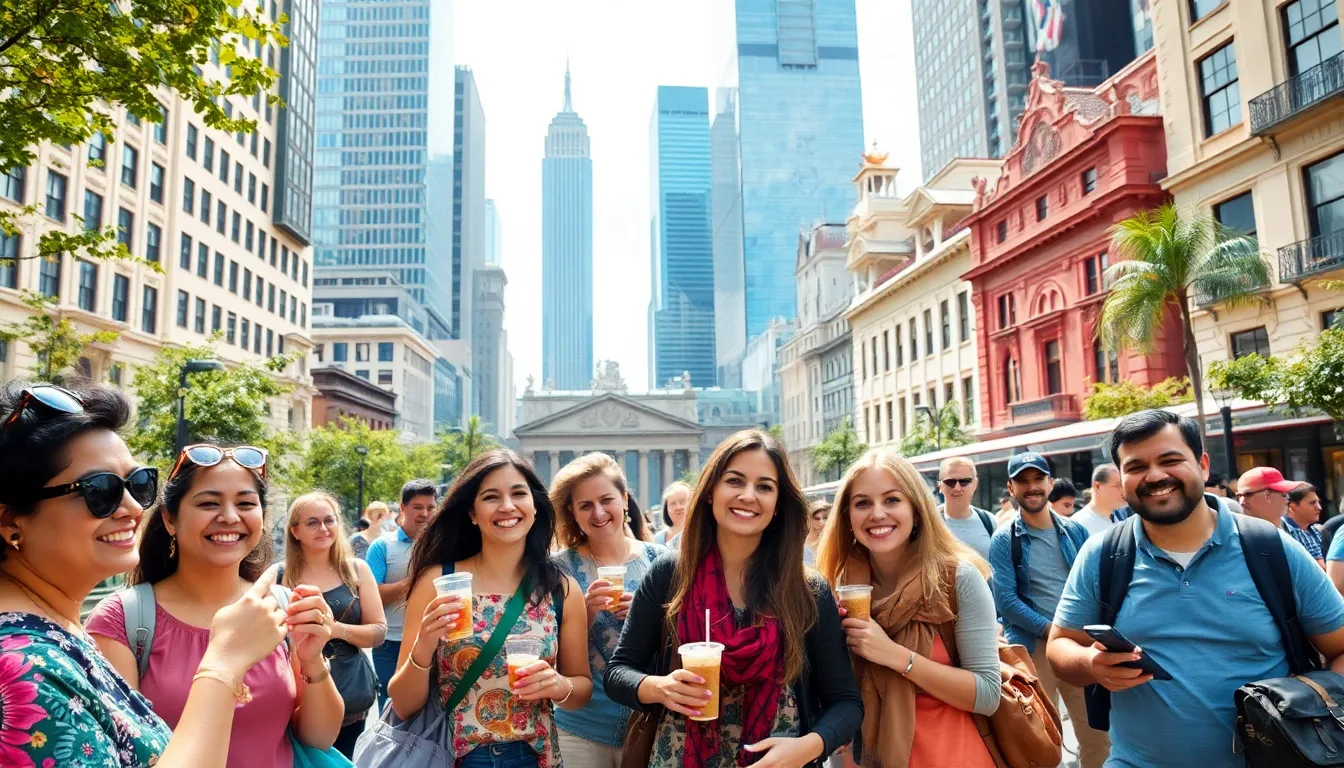Ever found yourself daydreaming of idyllic beaches or bustling markets in far-off lands? If so, you’re not alone. Tourism is the irresistible siren of adventure that calls millions every year. But what does tourism really mean beyond the glossy brochures and Instagram-worthy snapshots? Buckle up, because we’re about to jump into the rich tapestry of tourism, its definition, history, types, impact, and trends, while ensuring a sprinkle of fun along the way.
Table of Contents
ToggleDefining Tourism

At its core, tourism refers to the act of traveling for pleasure, leisure, or business. The World Tourism Organization defines it as the movement of people to destinations outside their usual environment. This may seem straightforward, but there’s more to it than hopping on a plane and taking a selfie.
Tourism encompasses a cherished experience, characterized by exploration, relaxation, and engagement with different cultures. It’s about immersing oneself in new environments, meeting new people, and often enjoying local cuisines.
From bustling cities to tranquil countrysides, tourism offers a rich tapestry woven with countless threads. Whether it’s a spontaneous weekend getaway or a meticulously planned grand adventure, the essence of tourism lies in the journey and the experiences garnered along the way.
Historical Context of Tourism
Tourism has been part of human history for centuries, evolving significantly over time. In ancient times, wealthy Romans would travel to coastal resorts, while their counterparts in ancient Greece would journey to religious festivals, showcasing how travel was intertwined with culture even then.
Fast forward a few hundred years to the Middle Ages, and travel took a different turn. Pilgrimages became a primary form of tourism, with countless people visiting holy sites across Europe and the Middle East. The Renaissance ushered in a new era where education and the arts made cultural travel popular among the elite.
The Industrial Revolution marked a significant leap in tourism. Trains and steamships made it possible for the masses to travel, transforming tourism from a luxury reserved for the rich to a more accessible pastime. Now, with the advent of technology and the internet, tourism is booming like never before, with an unprecedented number of people exploring the globe.
Types of Tourism
When discussing tourism, one size certainly does not fit all. There’s a plethora of tourism types, each with its unique flavor, catering to diverse interests.
The Economic Impact of Tourism
Tourism serves as a significant driver of economic growth in many regions. It supports millions of jobs, from hotel staff to tour guides, generating income for countless families. Countries depend heavily on tourism revenue to boost their economies, especially in those reliant on travel for sustainability. According to the World Travel and Tourism Council, travel and tourism accounted for 10.4% of global GDP in 2019. This staggering figure underscores tourism’s vital importance in the global economy.
Environmental Implications of Tourism
While tourism has numerous benefits, it’s not without its downsides. Environmental implications arise as destinations face over-tourism, leading to habitat destruction and pollution. Popular spots can struggle to maintain their natural beauty when flooded with visitors. Sustainable tourism practices are increasingly critical to protect our planet’s treasures while allowing future generations to travel.
Cultural Significance of Tourism
Conversely, tourism can foster cultural exchange and appreciation. It allows travelers to investigate into the local traditions, languages, and ways of life. Positive intercultural interactions can promote understanding, empathy, and collaboration amongst different communities. Mindful tourism, where visitors respect and engage positively with local cultures, helps maintain cultural heritage.
Challenges Faced by the Tourism Industry
Even though its benefits, the tourism industry faces myriad challenges.
Seasonality is one issue: many destinations experience drastic fluctuations in visitors throughout the year, leading to economic instability. Besides, the ongoing effects of climate change pose a significant threat to many popular tourist locations, urging the need for sustainable practices.
COVID-19 brought the world to an unprecedented halt, exacerbating the problems faced by the industry. Many businesses were forced to adapt quickly to ensure safety, leading to an increasing reliance on technology solutions such as virtual tours and online experiences.
Future Trends in Tourism
As the world gradually returns to travel, several notable trends are shaping the future of tourism.
Sustainable tourism is at the forefront, with travelers increasingly prioritizing eco-friendly options. Destinations and businesses are adapting to accommodate this shift, promoting green initiatives that enhance experience while protecting the environment.
Also, technology continues to reshape how we explore the globe. Augmented reality and AI-driven recommendations are revolutionizing how travelers plan and enjoy their adventures.
Based on recent surveys, wellness tourism is also on the rise, emphasizing health and mindfulness among travelers looking for restful retreats.





